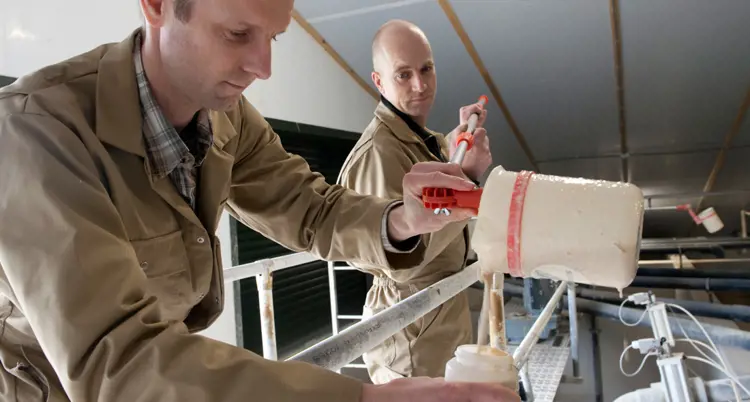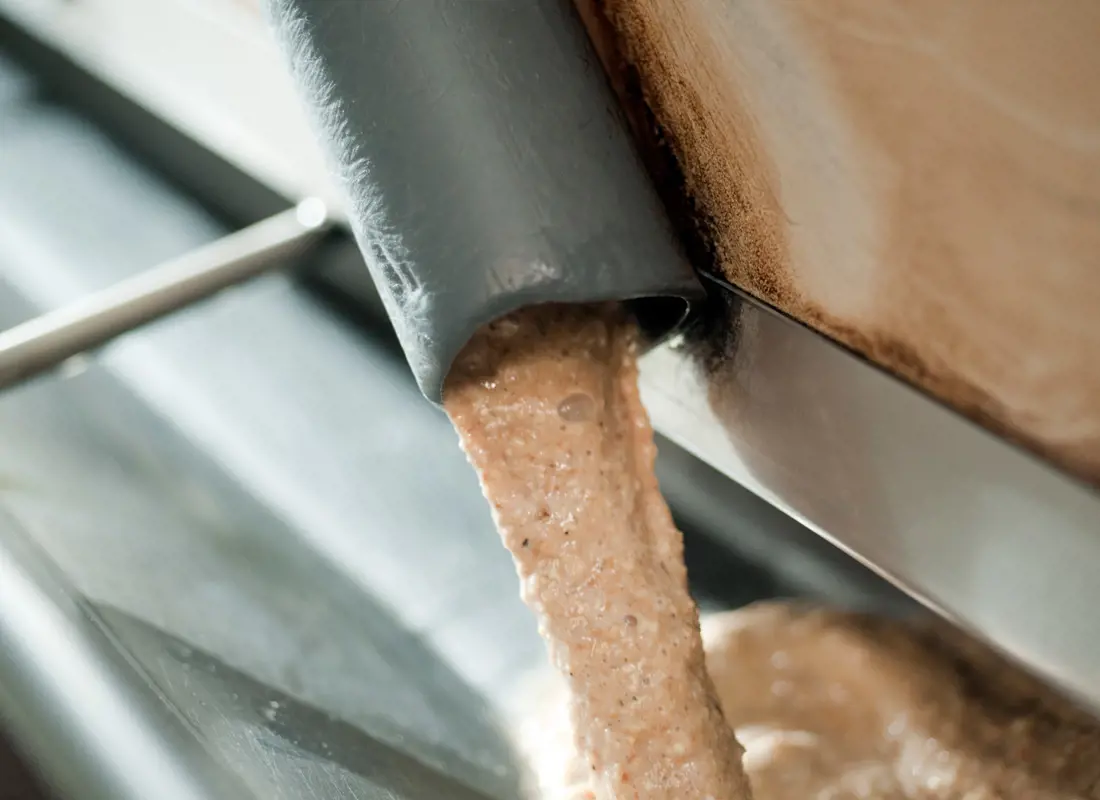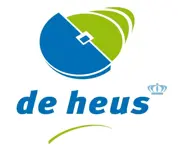Pioneering the use of residual flows in animal feed
Summary
Using residual flows in animal feed to promote sustainability and circularity is something De Heus is leading the way in. De Heus optimizes nutrient use and lowers greenhouse gas emissions in animal feed by adding food manufacturing byproducts like whey and wheat flour. In addition to saving farmers money on feed, residual flows lessen the deforestation brought on by soy farming. Poland has saw substantial uptake, but the Netherlands is at the forefront of liquid feed innovation. In order to guarantee a cheap and sustainable food supply, De Heus wants to take this concept global by exchanging knowledge on how to make the animal feed sector more circular and less carbon-footprinting.
As part of its sustainability strategy, De Heus aims to increase the use of residual flows, by-products and food waste. By taking the residual nutrients contained in by-products from human food production and incorporating them in our animal feed, we not only conserve scarce resources, we also stimulate circularity. While we use residual flows as ingredients in our compound feed, a significant number of farmers are using increasing volumes of residual flows in liquid feed. Ruud Bens, Product Manager Liquid Feed, tells us what progress De Heus has made in supporting farmers in the use of residual flows in liquid feed and the prospects for the future.

“In the Netherlands, about 5.4 million tons of by-products from food production are sold to farms per year and used in animal feed," says Ruud. "These residual flows include wheat flour, cooked potato peels, liquid starch, stale bread, broken cookies, rice bran, malting barley from beer production and whey from milk and cheese processing. In addition to waste products from the human food industry, we use distiller's dried grains from biogas production." These by-products can be used as fuel for heat production, raw material for fertiliser and other purposes, but processing them into animal feed gets the most out of their nutritional value.
Environmental and economic benefits
As well as maximising nutrient utilisation and increasing circularity in the feed production chain, the use of residual flows reduces greenhouse gas emissions from cultivating, processing and transporting raw materials. It also lowers the price of feed for farmers in the Netherlands since residual flows reduce the use of raw materials like corn, wheat and soy.
“You need a lot of knowledge to work with residual flows effectively, so De Heus advises farmers about how to use them.”
A thriving market for residual flows
"The Netherlands has a lot of experience with residual flows," says Ruud. "We've pioneered the use of liquid feed for pigs where residual flows are a major component." De Heus doesn't buy and sell residual flows directly. The market is so advanced in the Netherlands that resellers buy residual flows from food manufacturers and sell the bulk to farmers and a small amount to animal feed producers like De Heus. "The quality of these by-products varies a lot, so we test their nutrient value in terms of protein, fibre, starch and other components. This analysis is essential since it forms the basis for the recipes for our complimentary feed which is used in combination with residual flows," continues Ruud. "In particular, we try to use protein from residual flows to reduce the amount of soy in our complimentary feed. In this way, we can help reduce deforestation resulting from soy cultivation." De Heus sells this complimentary feed to farmers and provides advice on how to use it with residual flows. The company also uses residual flows in its own compound feed.
Fostering use of residual flows in Poland
De Heus has also fostered the use of residual flows and the development of liquid feed in pig farming in Poland. "Fifteen years ago we took over a Polish feed producer and gradually introduced liquid feed and the use of by-products," says Ruud. "Today over 120 pig farms in Poland use liquid feed and we share our expertise with them." Although Poland is a bigger country than the Netherlands, many of the country's farms are located close to food production factories so farmers usually buy residual flows directly from producers. "You need a lot of knowledge to work with residual flows effectively," says Ruud. " So De Heus advises farmers about how to use them in conjunction with complimentary feed.
Other opportunities
De Heus' business units in the Netherlands and Poland lead the way in the use of residual flows in animal feed and the rest of the world is starting to catch up. Our business units in Africa have started using food by-products in animal feed and a few farms in Spain use residual flows in pig feed. In addition, while liquid animal feed is popular in the UK, there is no use of residual flows probably due to unfamiliarity with these products. "There are a lot of untapped opportunities to use residual flows," says Ruud. "We need to share our knowledge with other countries so we can increase circularity and reduce the carbon footprint of the animal feed industry.

Developing the global market
Once farmers and feed producers realise the benefits of residual flows, their use in other countries will only increase. "Resellers who are active in the Netherlands and Belgium are starting to operate in Poland and Spain," says Ruud. These resellers will also actively identify new residual flows that can be used in animal feed. "I'm very focused on using residual flows in liquid feed but we use residual flows in dry feed as well," Ruud continues. "For example, you can use broken cookies and by-products from pasta production in dry feed, as well as residual flows from soy, rapeseed and sunflower oil processing.
Other market drivers
The need for a constant supply of affordable food will drive the use of the residual flows, particularly in Eastern Europe, but it is mainly environmental concerns that will increase their uptake globally. "As countries look to save energy and reduce their carbon footprint, this will translate into increased use of residual flows from food production," says Ruud. When that happens, De Heus will be ready to offer advice and expertise on the use of by-products in liquid feed.




